Starting a vegetable garden can be exciting and rewarding, especially for beginners. With a bit of research, planning, and patience, even those with the greenest thumbs can enjoy their labor’s fruits (or vegetables). Easy-to-grow vegetables are perfect for first-time gardeners, as they require less maintenance and have a higher success rate.
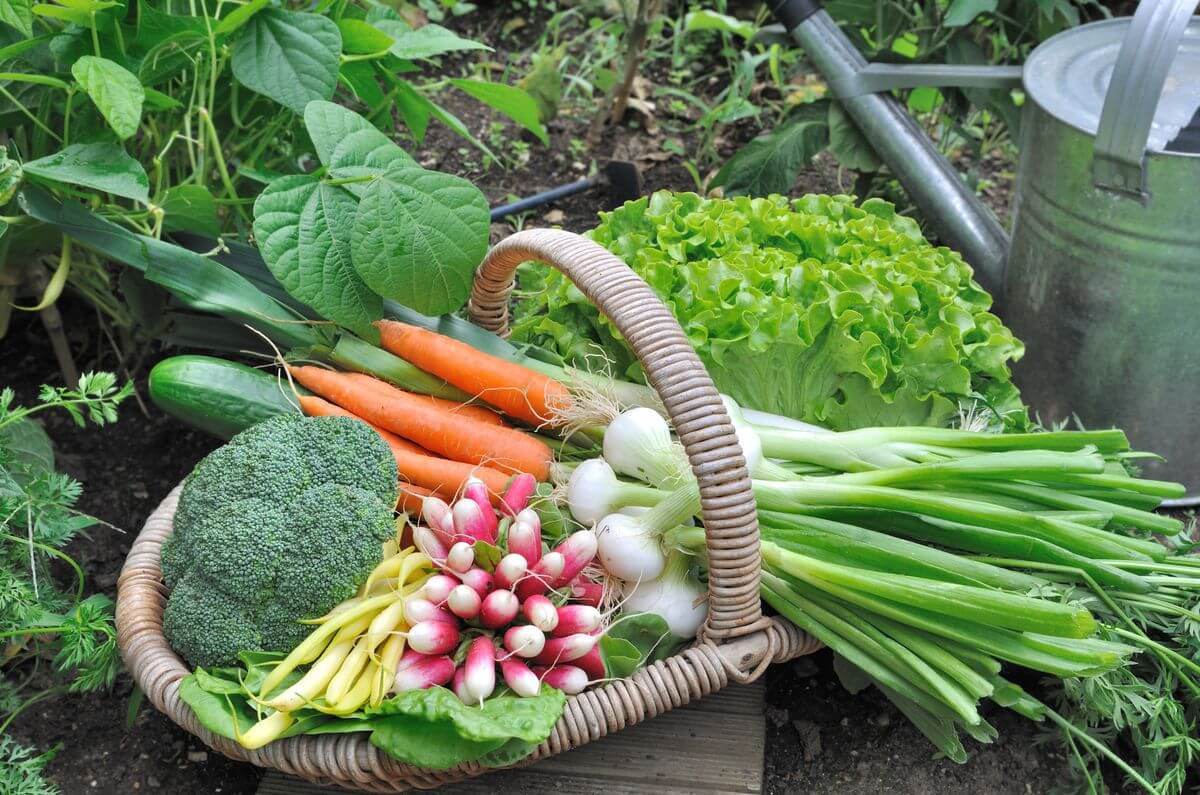
Selecting the suitable vegetables for your garden depends on several factors, including your climate, soil type, and personal preference. However, certain vegetables are known to be beginner-friendly, making them ideal for those just starting their gardening journey. In this article, we will discuss some of the easiest vegetables to grow for beginners and provide tips on maximizing your success in the garden.
Key Takeaways
- Choose easy-to-grow vegetables for a higher success rate
- Consider climate and soil type when selecting plants for a beginner garden
- Patience and planning will lead to an enjoyable and rewarding vegetable garden
Getting Started with Your Vegetable Garden
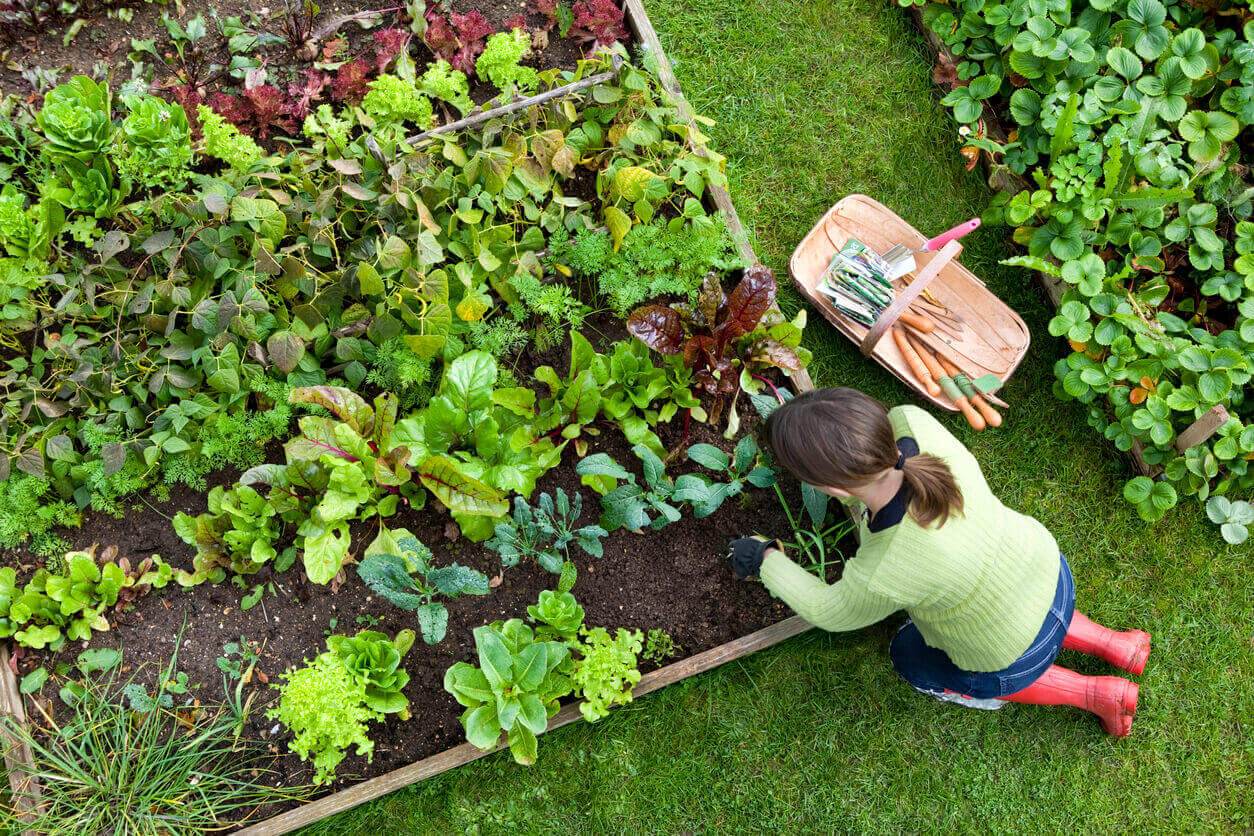
Choosing the Right Location
The first step in creating your vegetable garden is selecting the perfect location. Consider the following factors when choosing a spot for your garden:
- Accessibility: An accessible location lets you regularly maintain and monitor your garden. A spot near your house or in your backyard is ideal.
- Sunlight: Most vegetables require at least 6 hours of direct sunlight daily. Observe how the sun moves across your chosen area throughout the day to ensure sufficient light exposure.
- Water source: Your garden will need to be watered frequently. Choose a location near a water source for added convenience.
It’s essential to consider the space you have available. If you’re limited in your room, consider using raised garden beds. Raised beds can provide an efficient, compact area for growing vegetables and offer improved drainage.
Understanding Soil and Sunlight Requirements
Soil quality plays a crucial role in the success of your vegetable garden. To maximize growth, your garden should have:
- Well-drained soil: Proper drainage prevents waterlogged roots and promotes healthy growth. A mix of loam and compost can be ideal for achieving well-drained soil.
- Nutrient-rich soil: Vegetables need a variety of nutrients to thrive. Test your soil for nutrient levels and amend it with compost, manure, or other organic matter.
- Proper soil pH: Most vegetables grow best in slightly acidic soil with a pH between 6.0 and 6.8. A soil pH test can help you determine if any adjustments are necessary.
The amount of sunlight your garden receives is equally essential. As mentioned earlier, most vegetables require at least 6 hours of sunlight daily. Some vegetables, however, can tolerate partial shade.
Here’s a brief list of common vegetables and their sunlight requirements:
| Vegetable | Sunlight Requirement |
|---|---|
| Tomatoes | Full sun (6+ hours) |
| Peppers | Full sun (6+ hours) |
| Lettuce | Partial shade (4-6 hours) |
| Spinach | Partial shade (4-6 hours) |
Overall, understanding your garden’s soil and sunlight requirements will ensure the most successful growth for your vegetables. With these factors established, you’ll be well on your way to a bountiful vegetable garden.
Essential Tools and Supplies for Beginner Gardeners
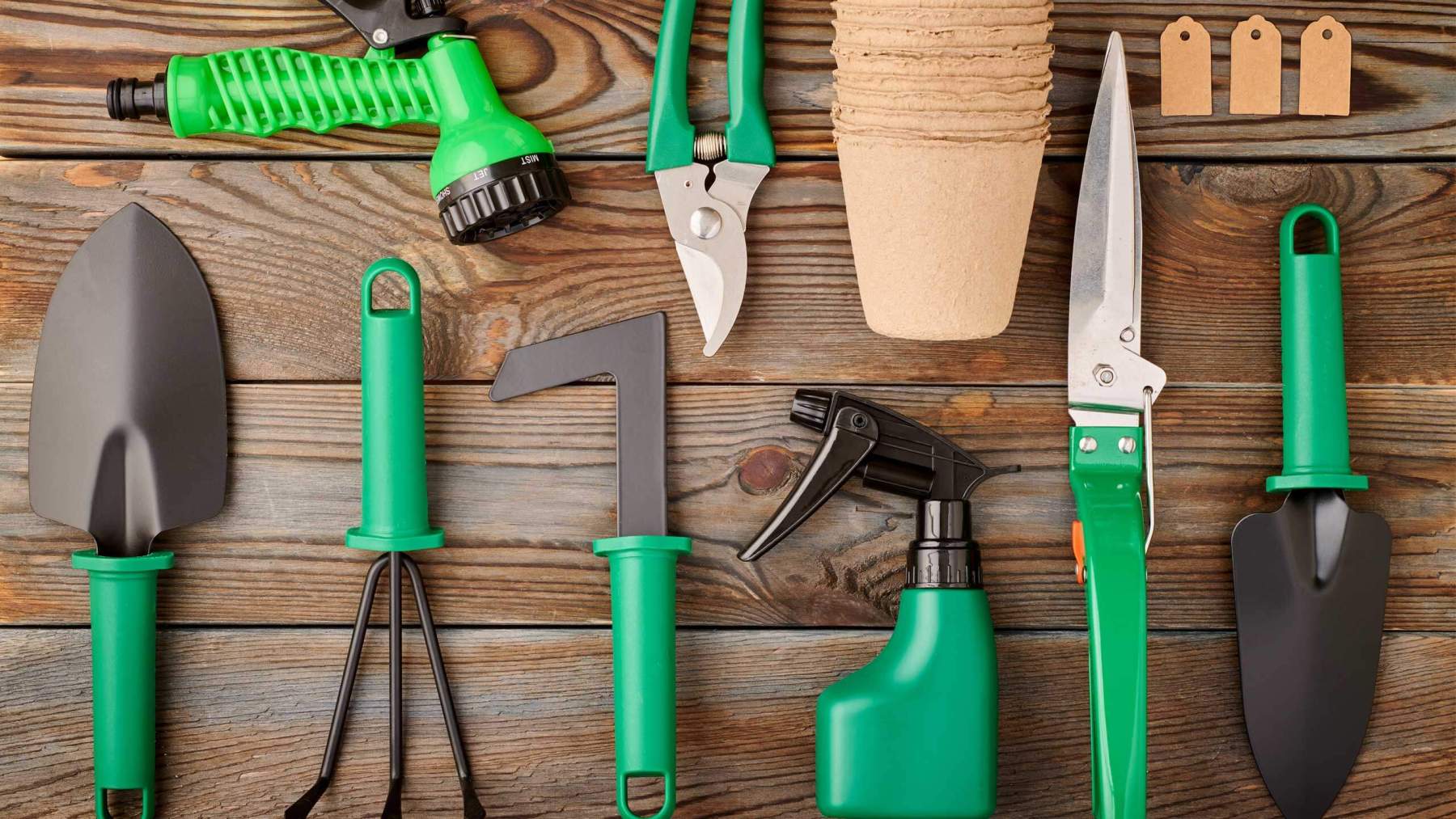
Starting with Quality Seeds
Selecting the right seeds is the foundation of a successful garden. Choose quality seeds from reputable companies to ensure more robust and healthier plants. Look for seeds that are:
- Organic
- Non-GMO
- Heirloom Variety
Containers are essential for starting your seedlings, providing a controlled environment for germination. You can use:
- Plastic pots
- Biodegradable pots
- Recycled items like yogurt containers
Tip: Be sure to sanitize your containers before sowing the seeds to prevent diseases.
The Importance of Water and Maintenance
To have a thriving garden, keeping an eye on your plants is essential. Regular watering and proper maintenance contribute significantly to your gardening success. Here are a few tips:
- Water your plants consistently and moisten the soil, but not soaking wet.
- Monitor the surrounding environment and adapt your watering schedule accordingly.
- Install a drip irrigation system if you want a low-maintenance watering solution.
Maintenance is an ongoing responsibility in any garden. Here are some tasks to keep in mind:
- Remove dead leaves and spent blooms to promote new growth
- Control pests and diseases using organic methods
- Pruning and pinching back plants to maintain their shape and encourage bushier growth
Utilize a trellis or support system for climbing plants, such as pole beans, peas, and cucumbers, to keep them off the ground and ensure proper air circulation. A trellis can be made from various materials, like wooden sticks, metal poles, or string.
Following these tips and utilizing essential tools and supplies will create a solid foundation for your beginner vegetable garden.
Top Vegetables for First-Time Gardeners
As a beginner gardener, starting with easy-to-grow vegetables is crucial to gain confidence and experience. Here are some of the top vegetables to cultivate in your first garden, grouped into three categories:
Lettuce and Leafy Greens
Lettuce, spinach, and chard are excellent choices for first-time gardeners. They require minimal effort and proliferate, providing fresh, nutritious greens for your meals. To get started:
- Spacing: Plant seeds 1 inch apart in rows 12-18 inches apart.
- Soil: Well-draining soil with plenty of compost.
- Watering: Keep soil consistently moist.
You can harvest young, tender leaves within 4-6 weeks after planting with proper care.
Root Vegetables and Beans
Carrots, radishes, and beans make up another beginner-friendly group of vegetables. These crops develop underground, making them less susceptible to pests and diseases, requiring less maintenance. Keep the following guidelines in mind for these vegetables:
| Vegetable | Spacing | Soil | Watering |
|---|---|---|---|
| Carrots | 2-3 inches apart | Light, well-draining soil | Evenly moist; avoid over-watering |
| Radishes | 1-2 inches apart | Loose, well-aerated soil | Evenly moist |
| Beans | 2-4 inches apart | A rich, well-draining soil | Regularly, but don’t over-water |
Root vegetables and beans usually take 60-80 days from seed to harvest.
Cucumbers and Squashes
Cucumbers and zucchini are great options for beginners who want to grow more giant vegetables that require minimal effort. They thrive in warm weather and can be grown in-ground or in containers. Follow these tips for the best results:
- Spacing: Plant seeds 12-18 inches apart in rows 3-4 feet apart.
- Soil: Loose, well-draining soil enriched with compost.
- Watering: Maintain a consistent level of soil moisture.
Cucumbers and zucchini typically take 50-60 days from planting to harvest.
By starting with these easy-to-grow vegetables, your first gardening experience will be rewarding. Stick to the guidelines, and you’ll enjoy fresh, homegrown produce in no time.
Caring for Your Vegetable Plants
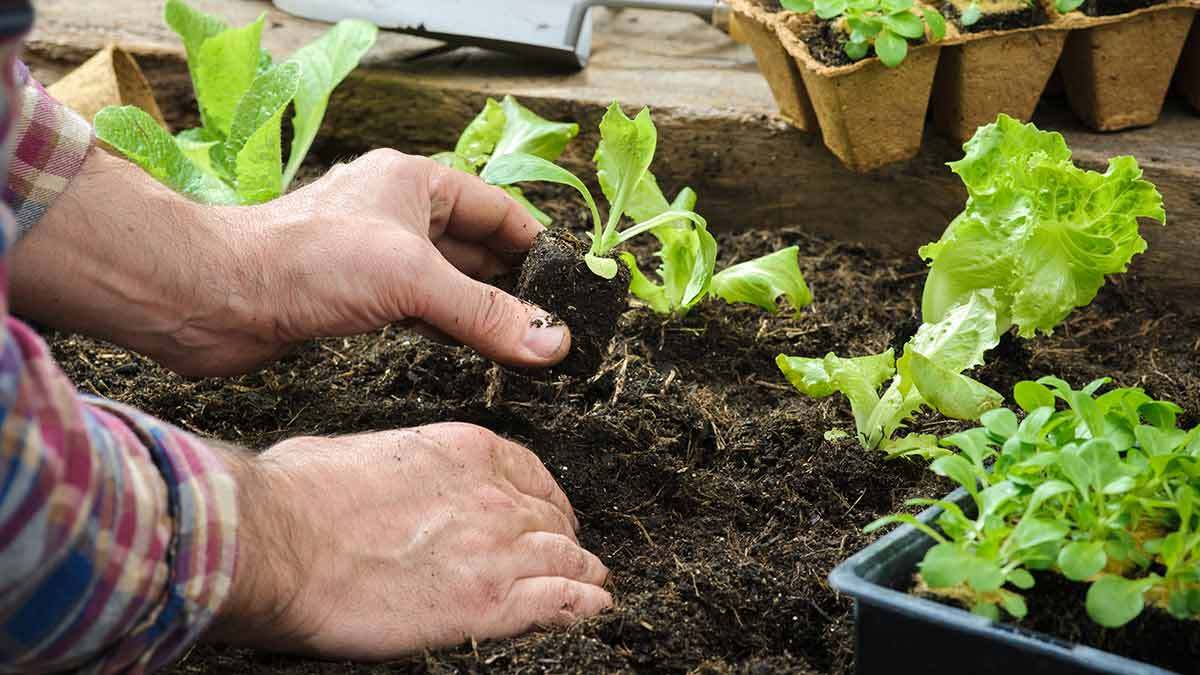
Watering and Fertilizing Basics
Water is essential for the growth of your veggies. Generally, you want to provide your plants with 1 inch of water per week, including rainfall. It’s better to water deeply but less frequently rather than shallowly and frequently. To help with water retention and avoid evaporation, consider adding a layer of mulch around your plants.
When fertilizing, providing the proper nutrients for your vegetables is crucial. Follow these basic guidelines for fertilizing your plants:
- Use a balanced fertilizer with equal parts nitrogen, phosphorus, and potassium.
- Apply fertilizer according to the package instructions for each veggie type.
- Consider using organic fertilizers like compost or well-rotted manure for a more sustainable approach.
Protection from Pests and Diseases
Protecting your vegetable plants from pests and diseases is a crucial aspect of caring for them. Here are some steps to take to keep your plants healthy and prevent outbreaks:
- Inspect your plants regularly for signs of pests or diseases, like holes in leaves, yellowing, or wilting.
- Practice crop rotation to avoid the buildup of pests and diseases in the soil.
- Use row covers to protect young plants from flying insects and critters.
- Implement trellising for climbing plants like beans and tomatoes. This provides additional airflow, helping to prevent the spread of disease.
Some common pests and solutions to control them:
| Pest | Solution |
|---|---|
| Aphids | Spray with water, and use insecticidal soap. |
| Slugs | Set beer traps and use copper barriers. |
| Cabbage worms | Use row covers, hand-pick, or use Bt. |
Watch for diseases like blight and mildew, which can rapidly spread and damage your plants. Remove and dispose of diseased plants to prevent them from spreading, and apply fungicides only if necessary.
Following these simple steps will help you provide the best care for your vegetable plants and enjoy a productive and healthy harvest.
Harvesting and Enjoying Your Vegetables
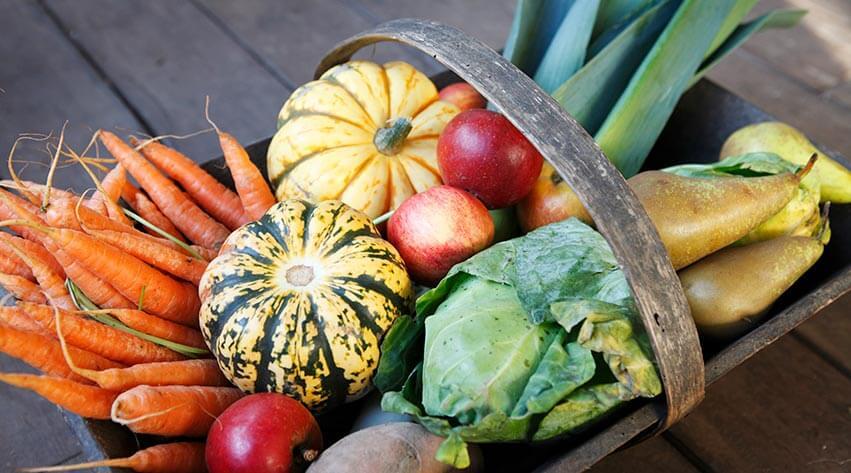
Congratulations on your decision to grow your vegetables! As a beginner, you’ll be delighted to see a bountiful harvest from your garden, providing a variety of fresh and healthy produce. In this section, we’ll guide you through harvesting your vegetables and enjoying the fruits of your labor.
When to Harvest
When it comes to harvesting your vegetables, timing is crucial. Each vegetable has its own prime time for picking, so it’s essential to familiarize yourself with the timeframes for each type. Here’s a brief overview of some popular vegetables to grow and when to harvest them:
- Lettuce: Harvest when leaves are tender and big enough to eat, around 30-60 days after planting, depending on the variety.
- Radishes: Ready to harvest around 3-4 weeks after planting.
- Carrots: Can be harvested when they are finger-sized, around 50-75 days after planting.
- Tomatoes: Harvest when fully colored and firm, usually around 60-80 days after planting.
The Harvesting Process
Here are some general tips for harvesting your vegetables:
- Use appropriate tools: A sharp knife, scissors, or pruning shears are helpful when harvesting tender vegetables to avoid damaging the plants.
- Check regularly: Monitor your garden frequently to ensure you’re harvesting at the right time and not leaving any vegetables to spoil on the vine.
- Gentle handling: Be gentle when harvesting to avoid bruising, as this can quickly lead to decay and spoilage.
- Clean and store properly: After harvesting your vegetables, clean them gently and store them in a cool, dry place. Use them as soon as possible to maximize freshness and taste.
Savoring Your Homegrown Vegetables
Your hard work pays off when you get to savor your homegrown vegetables. Here are a few tips to make the most out of your harvest:
- Experiment with recipes: Use your freshly picked produce to create new dishes or reimagine your favorite recipes.
- Preserve your extras: If you have more than you can eat, try canning, freezing, or pickling to extend the life of your vegetables and enjoy them later.
- Share your bounty: Your friends, family, and neighbors will appreciate your generosity if you share your harvest with them.
Follow these guidelines, and you’ll soon enjoy the satisfaction of harvesting various delicious, healthy vegetables from your garden. Happy gardening!
Frequently Asked Questions
What are some beginner-friendly vegetables that can thrive in container gardens?
Some beginner-friendly vegetables that do well in container gardens include lettuces, cherry tomatoes, radishes, and herbs such as basil, parsley, and cilantro. These plants have shallow roots and can thrive in containers at least 6 inches deep.
Which vegetables can be easily cultivated year-round by novice gardeners?
Leafy greens like spinach, kale, and Swiss chard are some of the easiest vegetables to cultivate year-round. You can also grow microgreens and sprouts indoors throughout the year. For novice gardeners, consider starting with leafy greens in containers and slowly expand your garden as you gain more experience.
What are the best vegetables to plant in raised garden beds for those starting?
Raised garden beds are ideal for growing vegetables like carrots, beets, onions, and potatoes, as they require loose soil for proper root development. You can also plant beans, peas, and cucumbers in raised beds, as their vines will benefit from the added space.
Can you recommend vegetables that are simple to grow from seeds for first-time gardeners?
Some of the easiest vegetables to grow from seeds include radishes, carrots, lettuce, beans, and peas. These are all quick-growing and can provide gratification for first-time gardeners. To increase your success, plant successor seeds labeled “easy to grow” or “beginner-friendly.”
What are the top vegetables beginners should consider for a small-space garden?
For small-space gardens, consider plants that can be grown vertically, such as pole beans, peas, and cucumbers. Other compact vegetables include spinach, lettuce, cherry tomatoes, and bell peppers. Herbs like basil, cilantro, and parsley also work well in small spaces and add flavor to home-cooked meals.
Which varieties have the fastest growth cycle for quick harvesting among the vegetables?
Radishes, baby greens, and arugula have the fastest growth cycles. Radishes take about four weeks from planting to harvesting, while baby greens can usually be harvested in three to four weeks. Arugula is another fast-growing veggie that can be ready to harvest in as little as four weeks.